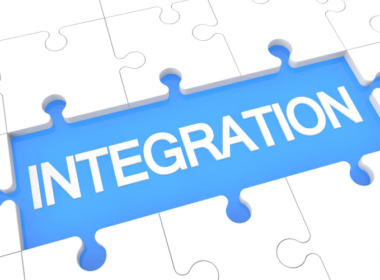Developing a new product often involves managing various moving parts simultaneously. You need to establish proper communication between the teams so that the development, prototyping, design, and manufacturing stages function smoothly. It requires proper management of the product concept and inspection of each step from design to first manufacturing run.
To ease this, the New Product Introduction process is introduced. The New Product Introduction (NPI) process involves defining a clear plan that takes the product from concept to the final product.
Defining New Product Introduction (NPI) Process
NPI process brings a systematic approach to take your product vision from initial conception to a tangible product to offer in the market. It acts as a bridge, ensuring a smooth transition from the ideation stage to customer adoption. It’s a blueprint that ensures businesses pay meticulous attention to every aspect of the product.
Struggling to bridge the gap from ideation to realization? Codewave’s design-led tech development services streamline this transition, simplifying complex processes
The Multi-step Strategy for Successful Product Launch
A successful product launch is not a matter of chance but the result of a well-orchestrated strategy. This strategy typically involves several key steps:
Market Research and Validation: Understanding customer needs and validating the product concept.
Design and Development: Employing design thinking to develop a product that meets customer expectations while standing out in the market.
Prototyping and Testing: Building prototypes and conducting rigorous testing to ensure the product meets quality standards.
Production Scaling: Preparing for mass production while maintaining quality and cost-efficiency.
Marketing and Launch Planning: Crafting a compelling marketing strategy that highlights the product’s unique value proposition.
Post-Launch Support and Iteration: Collecting customer feedback and making necessary adjustments to the product.
Importance of New Product Introduction (NPI) Process
A well-defined NPI strategy minimizes risks, optimizes costs, and streamlines development – ultimately leading to a successful product launch. It helps businesses align their product development efforts with market needs. Using NPI, they can also optimize internal resources for cost efficiency and timely delivery.
Difference Between NPI, New Product Development (NPD), and Product Life Cycle Management
It’s easy to confuse oneself between NPI, New Product Development (NPD), and Product Life Cycle Management. All of them are related to the product life cycle.
While NPI focuses on the specific process of introducing a new product, New Product Development focuses on the process from ideation through to the launch of the product. It is more aligned with the creative phase where ideas are transformed into tangible products.
On the other hand, Product Life Cycle Management (PLC) takes a broader view, managing the entire product lifespan from introduction to growth, maturity, and eventual decline. It involves evaluating and adapting to market scenarios continuously.
The Importance of NPI
A solid NPI process offers a variety of benefits for SMEs:
Streamlining the Product Launch Process
A clear roadmap reduces ambiguity and keeps everyone on the same page. A nicely organized NPI process acts as a blueprint for the entire product development cycle. It helps businesses ensure that every stage is executed in a seamless and orderly manner. Whenever resources are limited and efficiency in development is required, streamlining comes in handy.
Lowering Costs and Optimizing Resources
NPI helps in anticipating early roadblocks such as potential cost overflows and resource holdbacks to avoid costly delays and make the most of the team’s time and expertise. It results in significant cost savings and the best possible use of available resources. This foresight in planning and executing can allow for adjustments early on.
Ensuring Timely Product Delivery
Utilizing a well defined timeline you can keep your launch on track and capitalize on market opportunities. In the fast-paced tech industry, time-to-market can be a competitive edge. NPI’s structure approach helps make sure that product development milestones are met promptly.
Facilitating Close Collaboration Among Teams
NPI fosters communication and knowledge sharing between design, engineering, marketing, and sales teams. It aids in forming a more cohesive product. This process of bringing together creative minds in design, technology, and business strategy, businesses can ensure the product meets technical requirements and matches audience expectations.
Material Forecasting and Supply Chain Management
NPI enables you to identify material needs and potential supply chain issues well in advance. It involves strong planning for material needs, sourcing, and logistics. This strategy prevents delays and ensures a smooth path from prototype to production.
Key Steps in the NPI Process
A well-defined new product introduction process streamlines development, minimizes risks, and ultimately gets your product to market faster. Let’s break down the key steps involved:
- Ideation and Product Definition: Identifying Resources, Defining Roles
This initial stage is all about brainstorming, defining the problem your product solves, and identifying your target audience. Here, collaboration is key. After the ideation phase, we move onto product definition where we outline the product’s unique value proposition, features, and specifications. Identifying the necessary resources and defining the roles and responsibilities of the team members involved are critical.
- Feasibility Determination: Process Flow Diagram Creation, Design Manufacturability
With a clear product vision in hand, it’s time to assess feasibility. This step involves creating process flow diagrams to generate the product’s development lifecycle. It also helps evaluate design manufacturability. This step is crucial in identifying potential challenges in production. It also aids in evaluating if the manufacturing is within budget and technical constraints.
- Development and Prototyping: Creating Prototypes, Supply Chain Preparation
Designers and engineers work closely with business heads to translate the concept into tangible prototypes. These prototypes are vital in user testing, usability, functionality, and refinement. This step also involves supply chain preparation to ensure the availability of necessary materials and components.
- Pre-production and Validation: Engineering and Design Freeze, Preparing Manufacturing Tools
Before we begin with the mass production, a critical review of the product design and functionality is necessary. This step involves the engineering and design freeze—finalizing the product design for manufacturing. Some additional steps can be preparing manufacturing tools and setting up production lines.
- Manufacturing: Production Line Management, Quality Control
Proper production line management and quality control measures ensure that the final product meets the established standards and specifications. This step reduces risk of defects and ensures a consistent, high-quality product. It also makes sure that the integrity of the product is maintained and it is successful in the market.
- Evaluation: Continuous Improvement through Post-launch NPI Evaluation
The NPI process does not end with the product launch. Through post-launch NPI evaluation, we analyze market feedback and product performance. This valuable data allows us to refine your product and optimize future iterations, ensuring long-term success.
Codewave’s design thinking and tech development expertise make navigating through these key NPI steps smooth and efficient.
Overcoming NPI Process Challenges
Bringing a product to life is a collaborative effort. While the idea might spark in one department, successful execution demands seamless coordination across various functions. Here’s how to tackle some of the most common organizational hurdles:
Organizational challenges: Importance of department coordination
One of the major challenges is ensuring seamless coordination across all departments involved in the product development lifecycle. Lack of coordination between design, engineering, marketing, and sales can derail any new product introduction process.
Communication Challenges: Overcoming Internal and External Barriers
Communication is key to solving most problems. We must establish clear, consistent, and transparent internal communication between teams and external communication with stakeholders, suppliers, and customers. Similarly, misunderstandings can be negated with effective communication.
Iteration Challenges: Synchronizing Team Efforts
The NPI process is inherently iterative. It requires continuous feedback, test driven development, and refinement to ensure the final product meets market needs and expectations. However, uncontrolled revisions and a lack of version control can create confusion. Efficient iteration cycles allow teams to refine the product while maintaining focus and momentum.
Legal and Compliance Challenges: Adhering to Regulations for Successful Product Launch
Regulatory compliance is crucial. Compliance issues can lead to delays, additional costs, or even the failure of a product launch. Whereas, overlooking legal requirements can lead to costly delays or even product recalls. Hence, legal and compliance considerations help businesses adhere to all relevant regulations and standards.
Optimizing the NPI Process
Adopting a strategic approach to NPI, you can significantly enhance product success rates and market relevance. Here are four crucial ways to optimize your NPI process:
The Role of QMS and PLM: Implementing a strong Quality Management Systems (QMS) ensures consistent quality throughout the NPI process. It also makes sure regulatory requirements are met. Product Lifecycle Management (PLM) systems provide a centralized platform for managing all product data, from conception to end-of-life. The systems ensure seamless collaboration across teams.
Integrating Digital Tools: To enhance your process’ agility and efficiency, digital tools help a lot. These tools enable real-time decision-making, streamline workflows, and reduce manual errors. Overall, they accelerate the NPI timeline without compromising on quality or digital innovation.
Adopting a Lean Approach: The minimum viable process approach can create a process that focuses on the core functionalities needed to bring your product to market quickly. Gathering early user feedback and iteratively improving ensures your product meets real-world needs and avoids costly delays.
Benefits of Contract Manufacturing Partner: Partnering with a contract manufacturer (CM) brings valuable expertise and resources to the table. They offer valuable insights on manufacturability, cost optimization, and scalability. Early involvement of a CM streamlines the transition from prototype to mass production.
Collaboration and Team Composition in NPI
A well-orchestrated new product introduction hinges on assembling the right team. But who are the key players, and how do they work together?
Roles and responsibilities in the NPI process: Clearly define roles for each team member, from product managers to engineers and marketing specialists. This ensures everyone understands their contribution and avoids overlap or delays.
Cross-functional team collaboration: Encourage open communication and collaboration between diverse skill sets. Designers working alongside engineers, for example, fosters innovative solutions that are both aesthetically pleasing and functionally sound.
Involvement of senior management and stakeholders: Early buy-in from senior leadership ensures access to resources and smoothens decision-making. These are helpful to guide the project direction, prioritize resources, and resolve conflicts.
Early engagement with contract manufacturers: Involving a contract manufacturer (CM) early on provides valuable insights into manufacturability and scalability. Their expertise can optimize your design for cost-effective production.
Conclusion
A structured new product introduction process minimizes risks, streamlines development, and maximizes the chances of a successful product launch. By following these six key steps, you can ensure your product addresses real market needs, is built with user-centricity at its core, and has a clear path to market success.
With the rising consumer and regulatory demand for sustainable products and the increasing integration of digitalization in manufacturing and development processes, the future of NPI is indeed leaning towards embracing sustainable practices and leveraging advanced digital tools. Codewave is constantly evolving its approach to integrate these aspects seamlessly into the NPI process.
Codewave’s unique blend of design thinking and tech development expertise can provide the guidance and support needed to turn your product ideas into successful market realities. In a world where product life cycles are shrinking and competition is intensifying, partnering with us can ensure that your products not only reach the market but also capture the hearts and minds of your target audience.Ready to optimize your own NPI journey? Contact our team of experts for a free consultation or explore our wealth of case studies. Together, let’s turn your innovative ideas into market-defining products.








